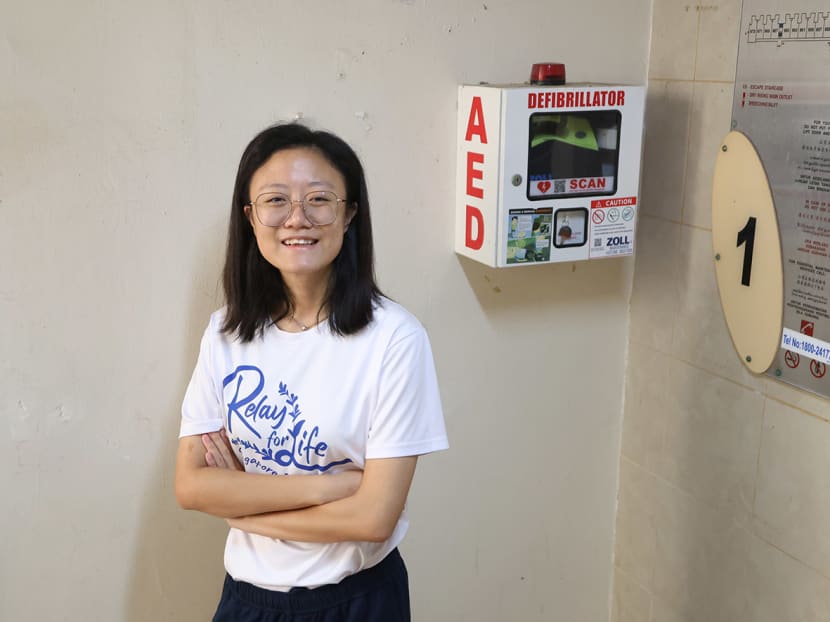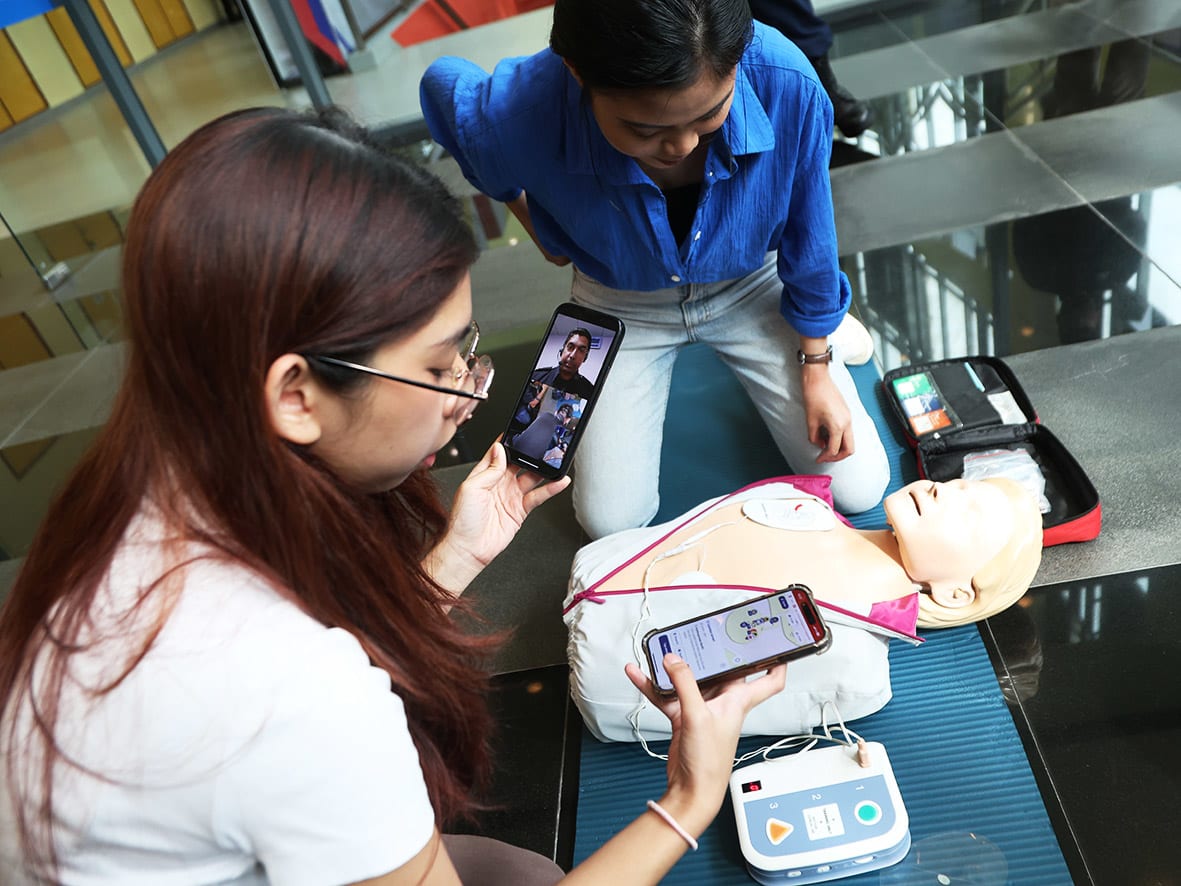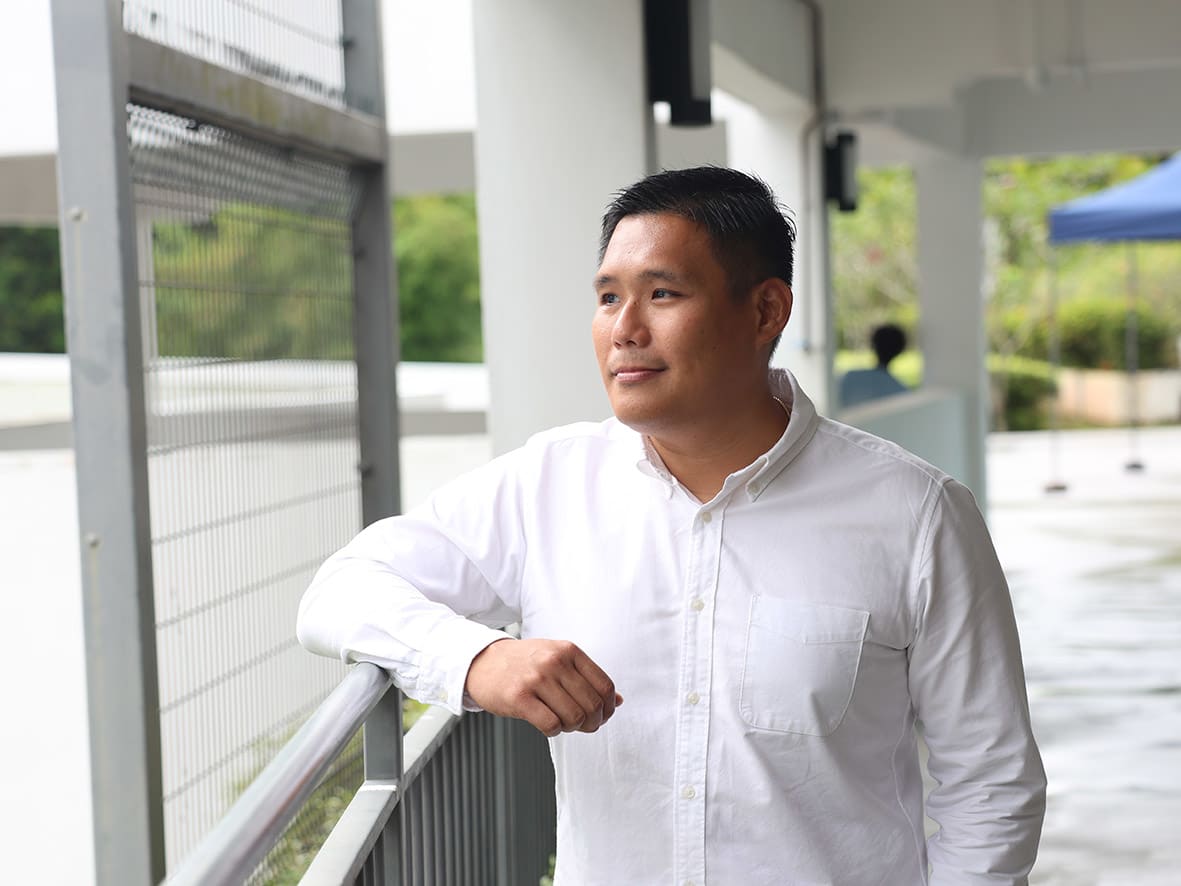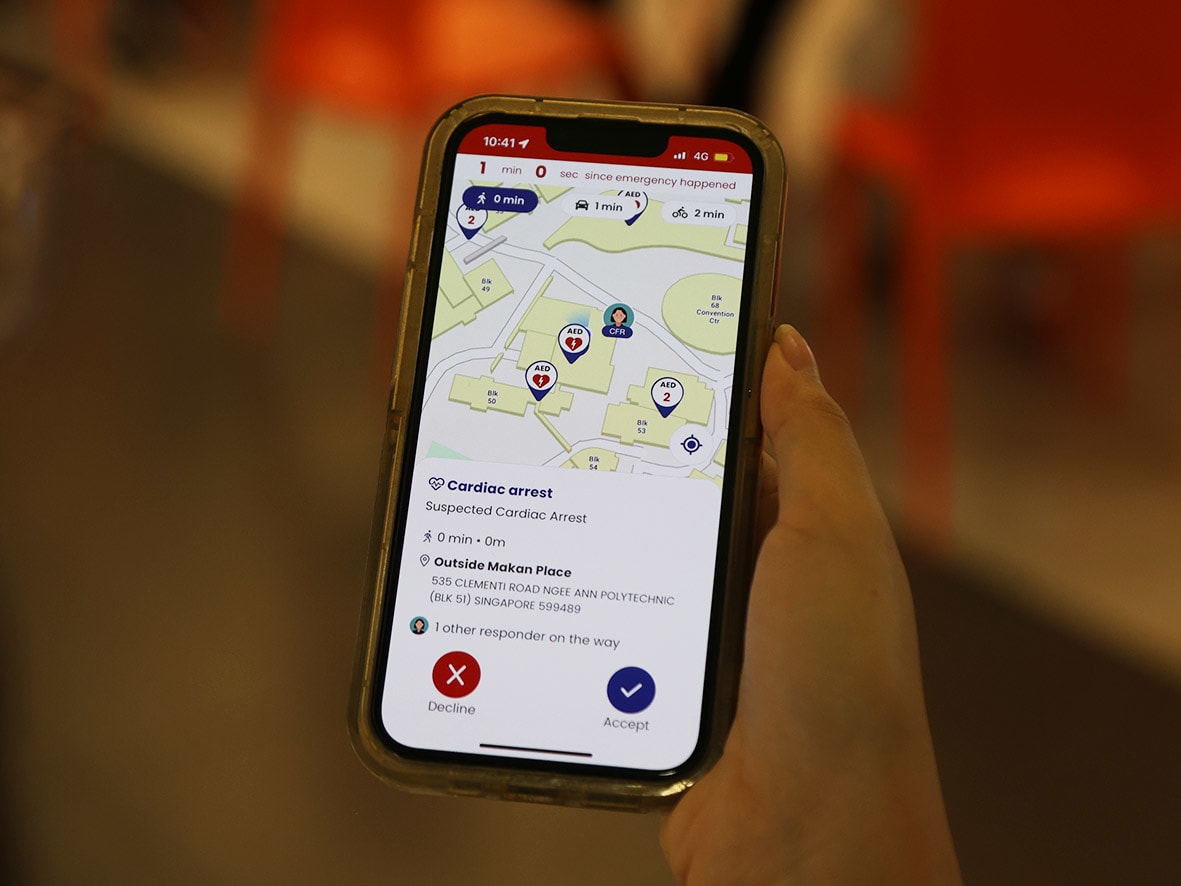How to save a life: The everyday heroes who do CPR, put out fires before SCDF officers arrive

Ms Sylvia Tan (pictured) helped to administer cardiopulmonary resuscitation, among other first-aid tasks, to a man who had collapsed from cardiac arrest.
SINGAPORE — For 21-year-old Sylvia Tan, walking past her neighborhood newspaper shop will forever remind her of a night last November where she stepped in to save a life.
While scrolling through social media channel Instagram on her phone at around 9pm, she received an alert on the myResponder mobile application that someone had collapsed nearby.
The app run by the Singapore Civil Defence Force (SCDF) alerts members of the public to nearby emergencies such as minor fires or people who are having suspected cardiac arrests.
Ms Tan left her home hurriedly and went down 14 floors to a passageway near her housing block in Whampoa, where she found a familiar face in the neighbourhood lying on the ground.
The "newspaper uncle", or the newspaper seller, was surrounded by well-meaning friends trying to administer cardiopulmonary resuscitation (CPR) with the help of an SCDF personnel called a dispatcher who was on a speaker phone.
Ms Tan, who is a psychology student at the National University of Singapore (NUS), said: “I could see a huge crowd of people and someone doing CPR, but very wrongly. They were doing push-ups on the person and left the AED (automated external defibrillator) unopened at his feet.”
She quickly took charge of the situation by starting CPR properly and instructed the others on how to use the AED, which delivers controlled electric shocks to a cardiac arrest victim to re-establish normal heart rhythm.
A cardiac arrest is when the heart stops beating and the lack of blood flow to the brain and other organs can cause a person to lose consciousness and even die if not treated immediately.
Soon after Ms Tan began tending to the man, another community responder arrived on the scene and helped to set up the AED, and the pair took turns to do the two tasks.
Two doctors who were general practitioners from nearby clinics also arrived and took turns to perform CPR while Ms Tan administered a third shock through the AED.
The man’s pulse eventually returned just as SCDF's paramedics arrived.
Ms Tan is one of more than 170,000 people registered on the myResponder app, who are prepared to drop everything in a flash when they receive a siren-like notification.
Since the launch of the app in 2015, at least 76 people who had a cardiac arrest have been saved by such responders.
Community responders also helped out with almost half of the minor fire incidents alerted through the app each year.
In response to TODAY’s queries, SCDF said that such responders perform an important role in the first few critical minutes of emergencies.
“By performing lifesaving CPR or mitigating a minor fire, they can save a life or prevent a fire from spreading, before the arrival of SCDF.”
On Thursday (July 4), an enhanced myResponder app was introduced that had more features such as a forthcoming video function for responders to speak to SCDF personnel.

TODAY speaks to community first responders who have actively attended to calls on the myResponder app to find out about their experiences and what keeps them motivated to serve in their community.
THEY ALSO DO CROWD CONTROL
First responders from the community who attend to cases can offer a range of assistance, from administering chest compressions to managing crowds to prepare for SCDF rescuers' arrival.
Mr Girvan Tay, 27, a junior doctor who has attended to 33 cases since he first downloaded the app in 2018, said that most of these were cardiac arrest cases of elderly neighbours near his Toa Payoh home.
Besides providing technical expertise, Mr Tay also helps in other ways.
“If the paramedic and fire crew come and take over the medical side, I’ll go and talk to the family. There’s a lot of explaining to do, because it can be quite traumatic for families.”
Families are often in a “state of shock”, so Mr Tay will explain in simple terms what paramedics are doing and give a rundown of what will happen and what to prepare for if the person needs to be taken to the hospital.
For Mr Hakim Lu, 24, despite now having a medical background as an NUS nursing student, he was rather unsure about attending to his first call.
He said that he has grown more comfortable after spending more time reading the resources on the app, which include instructions on how to administer CPR properly.
He also credits the growing myResponder community for helping him feel more confident in his abilities to make a difference, as other responders offer advice after attending to cases.
“The first time I went as a volunteer, there’s a sense of being lost. But if you’re unsure about anything, you can call SCDF again and it can guide you step-by-step,” Mr Lu said.
“As long as you can get past that (initial hesitancy), accept the case and go down, I think that’s already a good step."
Responders need not only be those from a healthcare profession.
Mr Eddie Koh, who works in car-park management, was presented with the SCDF Community Lifesaver Award in October last year after attending to an alert where a man had collapsed from a suspected cardiac arrest.
The 40-year-old ran to grab the nearest AED and then took over CPR from the man's family member when he arrived at the scene. He also administered two shocks from the AED before the paramedics arrived.
“It wasn’t as scary as people may think... Sometimes (members of the public) may have some fears about whether doing CPR or using the AED may worsen the patient’s condition, but these are things they should cast aside and just step forward to do their best,” Mr Koh said.

Software engineer Bernard Boey said that he had to tackle his feeling of having “imposter syndrome” after responding to his first cardiac arrest case.
The 26-year-old went to look for first-aid volunteering opportunities and other courses to boost his confidence.
Now he also makes sure he is prepared for any emergency by having his tools on standby.
“After recent fire cases that I’ve attended to, I realised that it was much easier to stand by bottles of water, so I have two 1.5L bottles filled with water next to the door, so I can just grab them and go whenever there’s any fire case,” he said, recalling an incident where he had to ask a nearby bakery for water when he had to put out a minor fire on a grass patch.
He added that attending to minor fires can also save SCDF's resources by allowing its personnel to focus on more serious incidents.
MORE INFORMATION AVAILABLE ON REVAMPED APP
Aside from alerting community responders to incidents via the myResponder mobile application, users may also access information on the nearest automated external defibrillators (AEDs) and send photographs and videos of fires to help Singapore Civil Defence Force (SCDF) personnel assess the gravity of the situation.
There have been more than 40,000 myResponder cases up to May this year.
The new features launched on July 4 include:
- Concessions made for how responders are travelling: When responders input how they get to the scene of emergencies, the app will adjust the type of alerts sent out to them. For those on foot, they will receive alerts to incidents within a 400m radius, and for those going by bicycle or vehicle, it is an increased radius of up to 800m and 1.5km respectively
- Community of responders: Responders are now able to see the locations of other responders who accept the same call, which SCDF said will enhance responders' “confidence levels" knowing there is added support from the community
- Better communication between responders: There is a new chat function to help responders communicate, for example, if a few of them are trying to locate an AED. This will be launched towards the end of 2024
- Integrated video call function: This function will help SCDF to make a better assessment of ongoing emergencies and send the appropriate resources. This is expected to be ready in 2025
The previous version of the myResponder app will cease operation by end-August 2024.

CALLS LEAVE RESPONDERS 'JUMPY', SOMETIMES EMOTIONAL
Some of Mr Tay’s medical peers have told him that it was “pointless” for first responders to attend to community cases, since one may not arrive on the scene faster than paramedics and the survival rates for cardiac arrest victims outside of hospitals is “already very low”.
“But it’s a rate, not a certainty. There’s still the possibility that it is not going to be pointless, and that’s what we offer by going down instead of leaving it up to chance,” Mr Tay said.
Ms Tan said that acting on a cardiac arrest within the first few minutes is "really critical" and in her experience, the earliest paramedics reach the site is usually seven to 11 minutes after being activated.
A reply to a parliamentary question last year from the Ministry of Home Affairs said that the median time for an ambulance to reach an incident was eight minutes in 2022.
Mr Boey, who has responded to around 14 calls since downloading the app in 2019, pointed out that he has arrived before the parademics or authorities in half of the cases he has responded to through the app.
Besides scepticism that a person "cannot do much" or will not arrive faster than paramedics, responders said that the other question they get from friends is why they are willing to share their location with the app at all times.
"Data privacy is very important. In this case, I don't have much qualms sharing my location at all times, since my precise location is required for alerts to be sent out. I trust that my location data is handled responsibly and not being stored or used for other purposes," Mr Boey added.
Frequently responding to calls can exact an emotional toll as they often encounter distressing scenes and must make split-second decisions that can profoundly affect lives.
Mr Tay, who began responding to alerts before entering the medical field, said that the first few calls left him “hypervigilant” and “quite jumpy” as he became ever ready to have his day disrupted in an instant.
Some app users suggested that more psychological support or follow through could be provided for first responders, since there may be limited follow-up beyond SCDF calling to check on certain details.
In response to TODAY's queries, an SCDF spokesperson said community first responders can receive training on conducting CPR, using an AED and basic firefighting through SCDF’s Responders Plus Programme.
Those who respond to cases are also recognised through the SCDF Community First Responder Award and the SCDF Community Lifesaver Award, SCDF said.
The former is presented to members of the public who render assistance to others in distress or save property, while the community lifesaver award is presented to people whose actions involve an element of self-risk or contribute to saving lives.
In addition to this training, SCDF supports community response through new features in the myResponder app.
"After responding to an incident, community first responders will be prompted with a 'wellbeing check-in'. This feature will provide guidelines on different coping techniques for community first responders in the aftermath of a stressful situation as well as various support avenues available," said the spokesperson.
This feature will be made available on the myResponder app later this year.
Despite the emotional strain, Ms Tan said that catching a glimpse of the "newspaper uncle" from time to time reminds her why she continues to respond to the alerts.
“He's up and about, hanging out with friends, selling newspapers. There's a sense of satisfaction each time I see him,” she said with a laugh.









